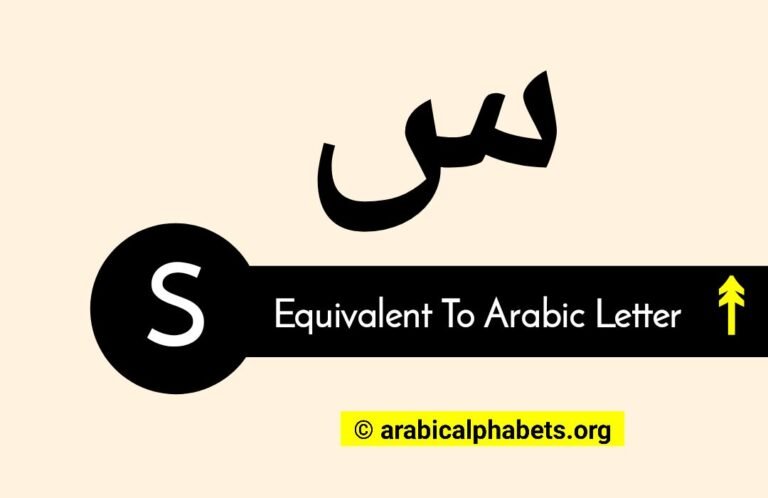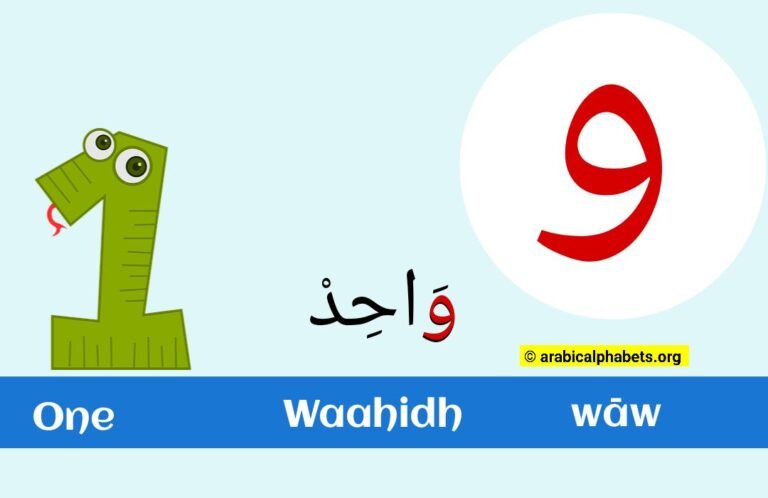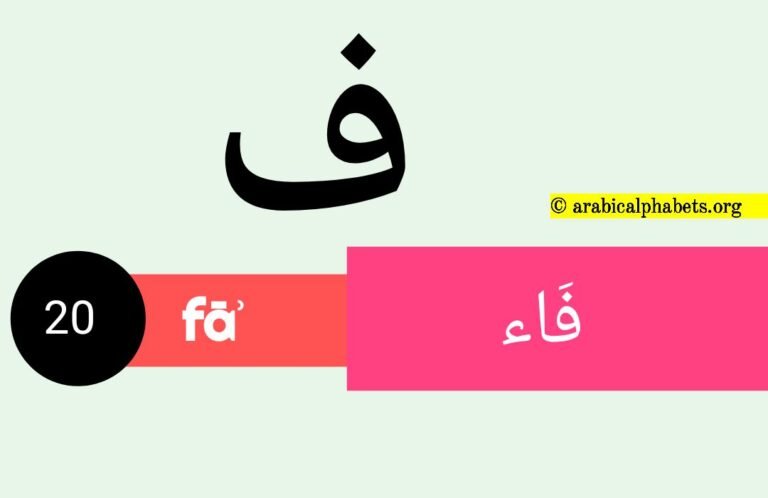Twenty-eight Arabic Alphabet Letter
Have you ever wondered about the mysteries of the Arabic alphabet? You may have encountered references to a 28th letter, leaving you curious and eager to uncover its identity.
Well, look no further! In this article, we will reveal the elusive 28th letter and provide you with a complete order of the Arabic alphabet.
But here’s the twist – we won’t rely on words to satisfy your curiosity; we’ll also bring in a photo! So buckle up and prepare for an enlightening journey through the Arabic alphabet that will leave you informed and visually satisfied.
Twenty-eight Arabic Alphabet Letter Full Details Here
Table Description -> A – Serial Number, B – Isolated Form, C – Trans-literation, D – Letter name, E – Letter Name In Arabic Script.
| A | B | C | D | E |
|---|---|---|---|---|
| 28 | ي | y | yāʾ | يَاء |
Welcome to a comprehensive exploration of the twenty-eighth letter of the Arabic alphabet, “Yāʾ” (ي). This guide will delve into its pronunciation, written form, role in word formation, and cultural significance within the Arabic language. Join us as we unravel the intricacies of “Yāʾ”:
1. Introduction to “Yāʾ” (ي):
“Yāʾ” takes its place as the twenty-eighth letter of the Arabic alphabet, adding its unique sound and shape to the language.
2. Mastering Pronunciation:
Attain precise pronunciation of “Yāʾ,” producing a distinct “y” sound that sets it apart from other letters.
3. Written Form of “Yāʾ” (ي):
Appreciate the written form of “Yāʾ,” resembling the English letter “y” while maintaining its distinctiveness in Arabic script.
4. Role in Word Formation:
Explore how “Yāʾ” collaborates with other letters to create words, enriching the Arabic vocabulary.
5. Vocabulary Enrichment:
Immerse yourself in Arabic vocabulary by exploring words containing “Yāʾ,” such as “يوم” (day), “يد” (hand), and “يقظة” (awake).
6. Influence on Arabic Grammar:
Understand the grammatical role of “Yāʾ” in sentence structure, verb conjugations, and connecting words within sentences.
7. Cultural Expressions and Identity:
Discover the cultural context of “Yāʾ” in expressions, idioms, and colloquial language, reflecting regional diversity.
8. Calligraphic Aesthetics:
Observe how “Yāʾ” contributes to the visual beauty of Arabic calligraphy, manifesting in diverse artistic styles.
9. Enhancing Writing Skills:
Practice writing “Yāʾ” independently and within words, refining your handwriting for accurate reproduction.
10. Mnemonics and Memory Enhancement:
Utilize mnemonic devices and memory techniques to aid in memorizing “Yāʾ,” creating associations for retention.
11. Reading Proficiency Enhancement:
Witness how “Yāʾ” combines with other letters to form words, advancing your reading skills as you recognize it in different contexts.
12. Progression in Arabic Learning:
Discover the logical next steps after mastering “Yāʾ,” including advancing to more intricate language skills.
13. Cultural Connection through Language:
By mastering “Yāʾ,” you’re immersing yourself in Arabic-speaking communities’ cultural and linguistic heritage.
14. Practical Application and Communication:
Equip yourself with foundational skills to confidently engage in reading, writing, and conversations using “Yāʾ” and other Arabic letters.
Join us in uncovering the Arabic letter “Yāʾ” (ي). As you explore its facets, you’re forging a path toward effective communication and a profound understanding of the intricacies and beauty of the Arabic language.
Get 1 to 28 Arabic Letters Order
Table Description -> A – Serial Number, B – Isolated Form, C – Trans-literation, D – Letter name, E – Letter Name In Arabic Script.
| A | B | C | D | E |
|---|---|---|---|---|
| 1 | ا | ā | ʾalif | أَلِف |
| 2 | ب | b | bāʾ | بَاء |
| 3 | ت | t | tāʾ | تَاء |
| 4 | ث | th | thāʾ | ثَاء |
| 5 | ج | j | jīm | جِيم |
| 6 | ح | ḥ | ḥāʾ | حَاء |
| 7 | خ | kh | khāʾ | خَاء |
| 8 | د | d | dāl | دَال |
| 9 | ذ | dh | dhāl | ذَال |
| 10 | ر | r | rāʾ | رَاء |
| 11 | ز | z | zāy | زَاي |
| 12 | س | s | sīn | سِين |
| 13 | ش | sh | shīn | شِين |
| 14 | ص | ṣ | ṣād | صَاد |
| 15 | ض | ḍ | ḍād | ضَاد |
| 16 | ط | ṭ | ṭāʾ | طَاء |
| 17 | ظ | ẓ | ẓāʾ | ظَاء |
| 18 | ع | ʿ | ayn | عَيْن |
| 19 | غ | gh | ghayn | غَيْن |
| 20 | ف | f | fāʾ | فَاء |
| 21 | ق | q | qāf | قَاف |
| 22 | ك | k | kāf | كَاف |
| 23 | ل | l | lām | لاَم |
| 24 | م | m | mīm | مِيم |
| 25 | ن | n | nūn | نُون |
| 26 | ه | h | hāʾ | هَاء |
| 27 | و | w | wāw | وَاو |
| 28 | ي | y | yāʾ | يَاء |
Learning Arabic Alphabets the Smart Way: Expert Guidance for Letter Proficiency
Welcome to the world of learning the Arabic alphabet the smart way! This comprehensive guide provides expert guidance on achieving letter proficiency in Arabic. With a strategic approach, interactive methods, and a focus on practical application, you’re embarking on a journey that makes mastering the Arabic alphabet both effective and enjoyable:
1. Introduction to Arabic Alphabets:
Begin your journey with a solid understanding of the Arabic alphabet’s significance and role in language communication.
2. Expert Guidance for Progress:
Follow the carefully crafted roadmap that guides you from foundational letters to advanced forms, ensuring a seamless learning experience.
3. Innovative Pronunciation Mastery:
Harness interactive tools to perfect your pronunciation, ensuring your spoken Arabic is clear and accurate.
4. Visual Recognition Strategies:
Train your eyes to quickly identify Arabic letters in written text, setting the stage for fluid reading and comprehension.
5. Building Vocabulary Power:
Expand your vocabulary by connecting each letter to words, enriching your language repertoire and practical usage.
6. Unveiling Cultural Insights:
Explore the cultural context of each letter, discovering its historical significance and regional variations.
7. Developing Fluent Writing:
Immerse yourself in writing Arabic letters, focusing on proper form and elegant penmanship.
8. Memory Techniques for Mastery:
Discover memory-enhancing techniques that aid in letter retention and recall, ensuring lasting proficiency.
9. Crafting Words and Phrases:
Combine letters to form basic words and expressions, bridging the gap between theory and real-life conversations.
10. Interactive Learning Activities:
Engage in activities that make learning the Arabic alphabet engaging, interactive, and tailored to various learning styles.
11. Resources for Visual Learners:
Access visual aids, diagrams, and downloadable materials to enhance your learning journey.
12. Advancing Beyond Alphabets:
Transition smoothly from mastering the Arabic alphabet to developing broader language skills, such as reading, writing, and speaking.
13. Cultural Enrichment through Language:
As you learn the Arabic alphabet, you connect with Arabic-speaking communities’ rich cultural heritage and linguistic diversity.
14. Practical Application and Confidence:
Arm yourself with the skills to confidently engage in Arabic reading, writing, and speaking powered by your alphabet mastery.
Embark on this smart learning journey of mastering the Arabic alphabet. As you progress step by step, you’re building a strong foundation for effective communication and connecting with the beauty and depth of the Arabic language.
Conclusion Points
In conclusion, our comprehensive exploration of the twenty-eighth Arabic alphabet letter, “Yāʾ” (ي), has illuminated its essential role within the Arabic language. Through an in-depth examination of its pronunciation, written form, grammatical implications, and cultural connections, we have gained a profound appreciation for the significance of “Yāʾ” in shaping Arabic communication.
By mastering the nuances of “Yāʾ,” you’re acquiring a fundamental building block of the Arabic language and connecting with the diverse cultural expressions and linguistic tapestry of Arabic-speaking communities. As you progress on your learning journey, remember that each letter, including “Yāʾ,” contributes to the richness of the Arabic language and its ability to convey intricate thoughts, emotions, and ideas.
As you continue your exploration of the Arabic language, the knowledge gained from mastering “Yāʾ” serves as a stepping stone toward fluency and cultural connection. Whether in writing, reading, or engaging in conversations, your understanding of “Yāʾ” and other Arabic letters will enhance your ability to communicate effectively and appreciate the depth and beauty of this remarkable language.
Ten frequently asked questions (FAQs)
Where does “Yāʾ” (ي) stand in the Arabic alphabet?
“Yāʾ” is the twenty-eighth letter in the Arabic alphabet.
How is “Yāʾ” (ي) pronounced?
“Yāʾ” is pronounced as a distinct “y” sound, which sets it apart from other letters.
Describe the written form of “Yāʾ” (ي).
The written form of “Yāʾ” resembles the English letter “y,” maintaining its uniqueness within the Arabic script.
How does “Yāʾ” (ي) contribute to forming words?
“Yāʾ” combines with other letters to form words, enriching the Arabic vocabulary.
Can you provide examples of words with “Yāʾ” (ي)?
Certainly! Examples include “يوم” (day), “يد” (hand), and “يقظة” (awake).
In what ways does “Yāʾ” (ي) impact Arabic grammar?
“Yāʾ” plays a role in sentence structure, verb conjugations, and word connections within sentences.
Are there cultural expressions associated with “Yāʾ” (ي)?
Explore how “Yāʾ” appears in idiomatic phrases, expressions, and colloquial language, reflecting cultural nuances.
What role does “Yāʾ” (ي) have in Arabic calligraphy?
“Yāʾ” contributes to the visual aesthetics of Arabic calligraphy, offering artistic interpretations in various calligraphic styles.
How can I improve my writing and recognition of “Yāʾ” (ي)?
Regular practice in writing “Yāʾ,” both in isolation and within words, enhances your ability to identify and reproduce it accurately.
After mastering “Yāʾ” (ي) in my Arabic learning journey, what’s the next step?
After mastering “Yāʾ,” you’re well-prepared to progress to more advanced language skills, such as reading, writing, and conversational fluency.
These FAQs provide insights into the Arabic letter “Yāʾ” (ي). By understanding its attributes, you’re making meaningful strides towards enhancing your grasp of Arabic and immersing yourself in its rich cultural heritage.






